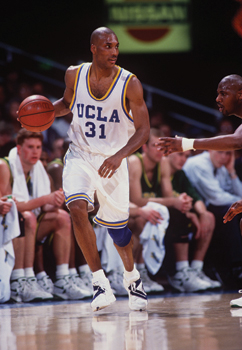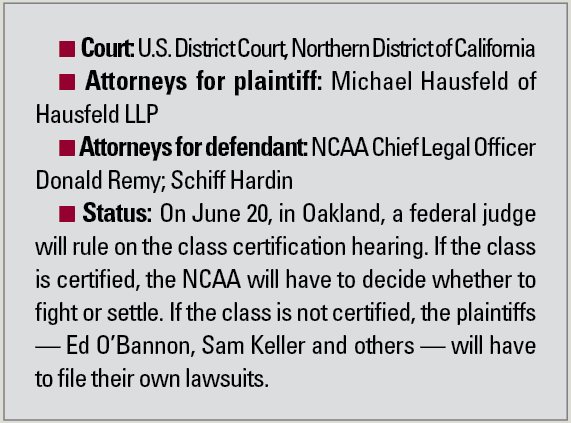At any given time, the NCAA is mired in a dozen or so lawsuits, so the inside of a courtroom is not an unfamiliar place. But the O’Bannon case, named after former UCLA basketball player Ed O’Bannon, has the potential to change the economic landscape in college athletics unlike any case before it.
At stake is the NCAA’s right to market the image and likeness of current and former NCAA athletes. EA Sports and Collegiate Licensing Co. are co-defendants with the NCAA. Essentially, O’Bannon argues that the NCAA should not be able to use the likeness of NCAA athletes without compensating them, and the case alleges that the defendants violated antitrust law by conspiring to not compensate athletes.
The plaintiffs, who include Bill Russell and Oscar Robertson, also allege that athletes are required to sign forms while they’re students that relinquish in perpetuity all rights pertaining to the use of their names, images and likenesses.
For example, North Carolina sells a slew of No. 23 basketball
 |
Ed O’Bannon is shown in 1995 during his playing days at UCLA.
Photo by: Getty Images |
jerseys with no name on the back. Michael Jordan is not compensated for those sales, even though a UNC No. 23 jersey clearly has value because of what Jordan did while wearing it.
If the O’Bannon case ends in favor of the plaintiffs, the NCAA and its member schools could theoretically be forced to pay athletes and former athletes royalties on merchandise and any other use of their likeness, and they could potentially share in the billions coming in from TV contracts.
Jay Fee, an attorney and sports agent, said the O’Bannon discussion has been a constant theme in the sports law class he teaches at Suffolk University in Boston.
“We touch on it a lot,” Fee said. “Especially with the younger generation, there seems to be more willingness to challenge the underpinnings of amateurism and the basic principles of equity. The constant refrain is: ‘Why can’t you pay college athletes?’ The use of a plaintiff’s name or likeness without permission is a fundamental claim.
“What’s the difference here?”





